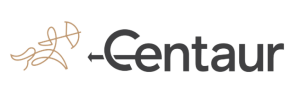Instrumenting the Post-Harvest Supply Chain with Centaur

One-third of the world’s food produce gets spoiled from farm to shelf. For reasons varying from unfit storage and transport conditions to poor equipment and processes, crops of all kinds deteriorate in quality before consumption.
In developed and developing countries alike, there is a common cause for all such cases: lack of monitoring. Today, there is no practical way to monitor the state of bulk commodities across the supply chain; silos and containers are still treated as black boxes.
A typical grain silo can be up to 50 meters high and store several thousand tonnes of product. Also, a bit of moisture or insect eggs can grow fast within it and spoil a big part of the crop.
What’s the industry’s standard way to figure out what’s happening inside? Well, the default approach is to do nothing! Or, on rare occasions, hire an expert to visit, and use so-called “silo cables” -probes and hoses that one has to somehow place within a silo- to get sample measurements manually…
Now, what if one could get continuous measurements of the actual conditions inside the silo remotely and in real-time? What if they could also leverage such data to feed advanced computational models to provide alerts on what can go wrong, along with recommendations on how to avoid it?
If this is the holy grail of post-harvest quality management, it is no coincidence that such a solution has not been in place so far. The engineering challenges to take measurements and transmit signals from a sensor buried beneath tons of product, often in toxic environments, are remarkable. Providing predictive analytics that one can trust across various storage configurations, crops and geographies is a herculean task in itself.
We are excited to share that Centaur Analytics is the first company in the market that actually delivers on that promise. Centaur’s industry-first, internet-connected, proprietary sensors bring to light a broad spectrum of measurements, ranging from generic conditions, like temperature, humidity and CO2, to the concentration of specialized chemicals, like phosphine and ethylene. A wealth of such data enables Centaur Analytics’ proprietary computational models to provide unprecedented insights and guidance to farmers, transporters, and buyers alike.
Hundreds of Centaur’s sensors are currently monitoring crops from grains to tobacco to fruits to nuts across a dozen countries and five continents. Users and customers extend from leading grain buyers and flour mills to tobacco majors to logistics providers to pest control companies. Detecting spoilage events months in advance and eliminating re-infestation risk used to be a far-fetched vision; it is now becoming a reality.
What started as an experiment by industry veterans Diogenis, Vasilis and Sotiris a few years ago in Volos, Greece, today is making headway in redefining post-harvest agtech, and we feel privileged to become part of this journey. We see a future where humanity’s precious harvests are not getting wasted and we look forward to Centaur playing a role in it.

Using real-time data from sensors that move with each crop, Centaur Analytics gives the food industry an unprecedented capacity to track, monitor, and instantly adjust the conditions in which the world’s food is stored, preventing spoilage and reducing unnecessary chemical use
Learn more